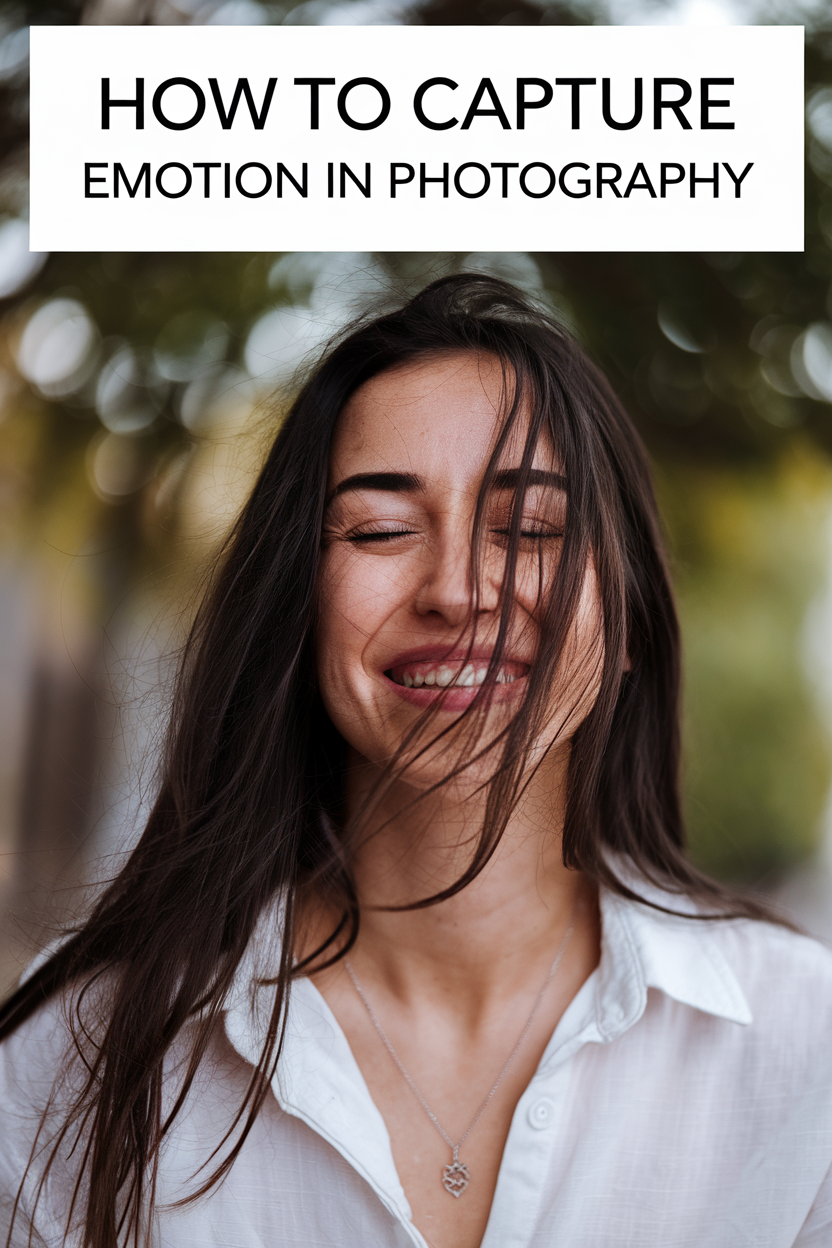Photography is a powerful medium for capturing raw, authentic emotions. Whether you’re a professional or a passionate hobbyist, creating images that resonate emotionally with viewers can transform a simple photo into a compelling narrative. Here are some tips to help you capture genuine emotion and tell a story through your photography.
1. Build Trust with Your Subject
Capturing authentic emotion starts with building a genuine connection with your subject. Whether you’re photographing a friend or a client, establishing trust helps them relax and be themselves in front of the camera. Spend a few moments getting to know them, engaging in casual conversation, or sharing a bit about yourself. The more comfortable they feel, the more likely they are to open up, giving you a chance to capture those real, unguarded moments.
2. Look for Candid Moments
Posed shots have their place, but candid moments often convey emotions far more effectively. Pay attention to small, unplanned actions, like a laugh, a quick look, or a quiet moment of contemplation. To catch these fleeting moments, stay observant, anticipate what might happen next, and shoot multiple frames. Sometimes, it’s the unexpected moments that hold the most emotional weight.
3. Focus on the Eyes
The eyes are often called the “windows to the soul” for a reason—they reveal a lot about what someone is feeling. When aiming to capture emotion, try focusing on your subject’s eyes. A close-up of intense or teary eyes, or a gaze that seems to look past the camera, can evoke a deep emotional response from the viewer. Even in group settings, focusing on the eyes can add a powerful emotional dimension to your photos.
4. Experiment with Composition
Composition plays a significant role in how emotions are conveyed in an image. Experimenting with framing and angles can help emphasize certain moods. For instance, shooting from a low angle can make a subject look stronger or more resilient, while a high angle can make them appear vulnerable. Close-ups can make the image feel more intimate, while wider shots can add a sense of loneliness or isolation.
5. Use Light to Set the Mood
Lighting can drastically influence the emotion of a photograph. Harsh light, like midday sun, can create dramatic shadows and add a sense of intensity, while softer, diffused light, such as during golden hour, can create a warm, nostalgic feeling. Experiment with different lighting conditions and how they interact with your subject’s expression to capture a range of emotions, from joy to sorrow.
6. Encourage Movement and Interaction
Static poses often feel staged, while adding movement can bring out genuine expressions. Encourage your subjects to move naturally, laugh, or interact with each other if you’re photographing multiple people. Action can help break down self-consciousness, and the emotions often shine through when people forget they’re being photographed.
7. Embrace Imperfection
Sometimes, an imperfect moment captures emotion in the most beautiful way. A shot with slight motion blur, a stray hair, or an out-of-place laugh can convey more than a perfectly composed image. Embrace imperfections—they can add authenticity and relatability to your photos, reminding viewers of their own lives and emotions.
8. Edit Thoughtfully
Post-processing can also enhance the emotional impact of a photo. Playing with contrast, saturation, and shadows can help amplify the mood you want to convey. Be careful not to overdo it, though; subtle adjustments often work best to maintain the authenticity of the emotion.
Final Thoughts
Capturing emotion in photography isn’t just about technical skill; it’s about empathy, intuition, and patience. With these techniques, you can begin to create images that resonate deeply with viewers, bringing them into the moment and allowing them to experience the emotions captured in each shot. Through this approach, photography becomes not just a visual art but a powerful medium of storytelling and human connection.

